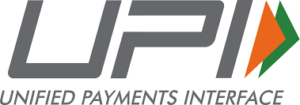Charges on UPI payment? Are you ready to pay for a payment? What did government said? Check out this blog to learn more.
Introduction
According to the RBI discussion paper on fees in the payment system published earlier this month, UPI payments may be subject to a tiered charge depending on different amount ranges. India’s digital payment ecosystem is in full swing as the RBI welcomes a long-awaited debate over whether transactions should be free or charged for. Even as the government maintains that UPI will remain free, Fintechs, banks, and the digital ecosystem weigh in.

What is UPI?
A single window allows you to transfer money between bank accounts through the Universal Payments Interface, or UPI. This means that you can shop, pay bills, or authorize payments by sending or receiving money or by scanning a rapid response (QR) code to pay a person, a business, or a service provider.
The National Payments Corporation of India (NPCI), the umbrella organization that regulates India’s retail payment systems, is the creator of UPI, which was introduced in 2016. India’s central bank, the Reserve Bank of India, oversees the NPCI, whose main objective is to push the country toward becoming a digital economy.

What did RBI said in its discussion paper?
In a discussion paper released on Wednesday, the RBI asked stakeholders if the merchant discount rate (MDR), a fee paid by merchants to acquiring banks, should be reinstated for UPI transactions. The RBI paper asks 40 questions in order to gather opinion on the charge structures for various digital payment systems. According to the statement, policy and intervention techniques would be guided by the feedback gathered.

However, RBI has not provided any guidance on fees for UPI transactions. Beginning on January 1, 2020, the government had enforced a framework with zero fees for UPI transactions. As a result, neither users nor merchants will incur any fees when using UPI. A few questions on what method should be implemented have been included, keeping in mind that the purpose of this discussion paper is to elicit general views,” the RBI stated in its “Discussion Paper on Charges in Payment Systems.”

The discussion paper stated that because UPI is a funds transfer system similar to IMPS, it may be argued that the fees in UPI need to be comparable to fees in IMPS for fund transfer transactions. Based on the various amount bands, a tiered fee could be applied. The following inquiries have been shared with the public as part of the discussion paper:
- Is subsidizing costs a more effective alternative in the case of zero charges?
- If UPI transactions are charged, should the MDR be assessed as a flat sum regardless of the transaction value or as a percentage of the transaction value?
- If fees are implemented, should they be controlled by a third party (like the RBI) or the market?

What is MDR?
The payments sector has traditionally demanded MDR, or merchant discount rate, on UPI transactions. The majority of other digital retail payment methods levy fees for each transaction. As of January 1, 2020, the government had enforced a “zero-charge framework” for UPI transactions. This leads into zero fees for both customers and merchants using UPI. According to the RBI’s estimates in its discussion paper, the payer and beneficiary banks, the third-party app, and the NPCI all pay a cost of Rs 2 to enable a UPI transaction with an average value of Rs 800 for a merchant transaction. According to official NPCI figures, there were 628.84 billion UPI transactions in July, totaling Rs 10.63 lakh crore.
What initiatives has the government taken to encourage UPI payments so far?
The financial assistance for the digital payment ecosystem outlined in the previous Budget would continue in 2022–23, according to Finance Minister Nirmala Sitharaman’s Budget address for 2022–23. This will promote increased use of digital payments. Additionally, there will be a focus on encouraging the usage of affordable and user-friendly payment services. The government set aside Rs 200 crore to cover the costs of UPI and RuPay debit card transactions. It allocated Rs. 1,500 crore to this in the fiscal years 2021–22.
What did government announced?
UPI is a digital public good that offers the public tremendous ease and boosts economic output. The government is not considering implementing any fees for UPI services. Other methods must be used to address the service providers’ concerns over cost recovery. To stimulate greater acceptance of #DigitalPayments and the promotion of payment platforms that are affordable and user-friendly, the government gave financial support for the #DigitalPayment ecosystem last year, and it has announced the same this year as well.
Prime Minister Narendra Modi had earlier praised UPI for reaching 6 billion transactions in July. July saw the most digital transactions since 2016 in terms of volume. According to information made available by the National Payments Corporation of India, UPI reported 6.28 billion transactions totaling 10.62 trillion (NPCI). Digital transactions in India are at an all-time high as a result of the Ministry of Finance and Startup India’s effort. India really leads the globe in the number of digital transactions made, mostly as a result of the fact that UPI transactions are now free for users.
According to experts, banks and service providers involved in offering UPI-related payment services should have some sort of structure in place to guarantee income. There must be a way for banks and service providers to make money, nevertheless, in order to improve the entirety of the infrastructure-related and risk mitigation actions that must be made by banks and other service providers. We anticipate hearing from the Ministry and the ecosystem about how some revenue, either from the government or the customer, can be earned through UPI.
–ANCHAL GARG
